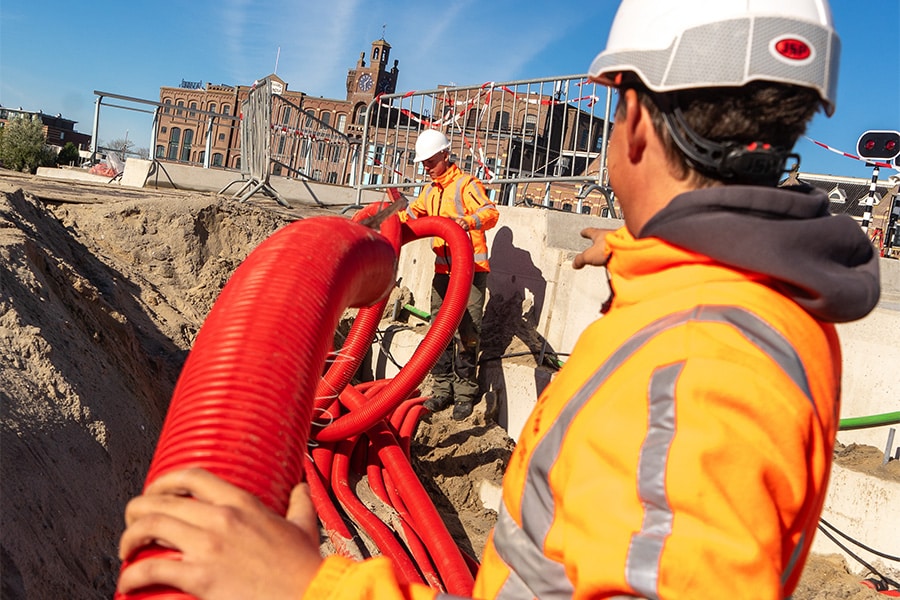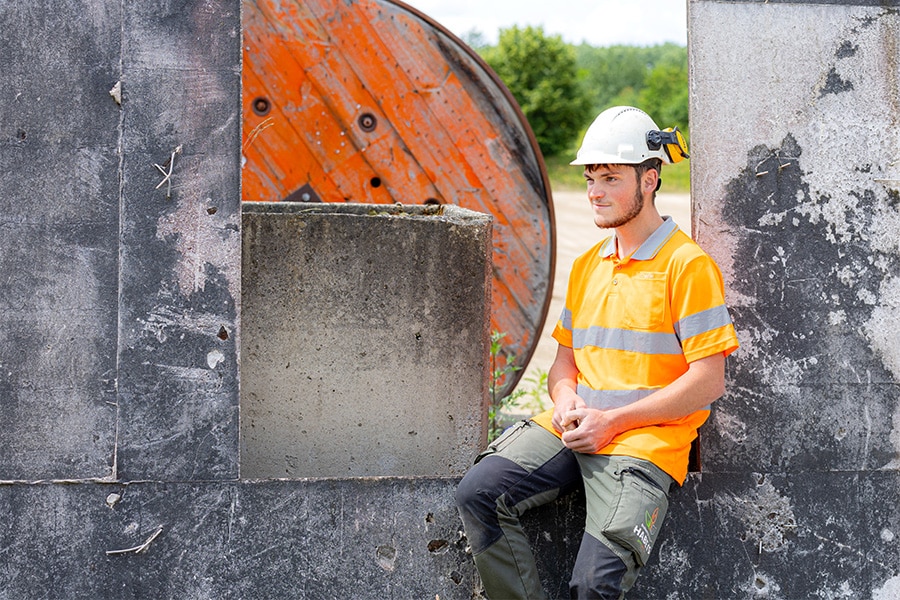
Knowing with two feet on the ground what is happening underground
We tend quite often to ignore what we cannot see directly. Similarly, everything that is hidden from our view underground. However, there are specialists who see what we cannot see with the naked eye. These geotechnical engineers advise and calculate everything related to strength and stiffness of the ground.
At Royal HaskoningDHV in Nijmegen there is such a team of "ground engineers," as many as 16 people strong. Their team leader is Monique Sanders, MSc, Associate Director Advisory Group Infrastructure. A woman with a strong vision of how best to work together to get the best out of people.
From building pit to flood barrier
"We provide advice and make calculations to determine the strength and stiffness of the soil. Our team designs building pits, foundations, sheet piling and flood defenses, to name a few examples. So it's purely about the strength calculation of the soil, not about what goes in or on it," Monique opens the conversation. "For example, we calculate foundations for runways at airports, foundations for abutments at bridges and quay structures. We do that for contractors, contractor projects, the Department of Public Works, water boards, provinces and municipalities, among others. Overall, we work for both the public and private markets, here in the Netherlands and abroad. We are abroad a lot to directly supervise projects and discuss designs."
The love for construction pits, tunnels and quay structures developed naturally
"When I started my studies in Civil Engineering in Delft, I had no idea that I would ever end up in this field of work," Monique continues. "During my studies, I began to love hydraulic engineering and water management. That's why I chose a Master's degree in Structural Hydraulics. I enjoyed the deep construction pits, tunnels and quay constructions. A nice combination between the maritime side and the practical side, geotechnical engineering."
Monique worked on Adam Bezuijen's PhD research, at Deltares, and was supervised by Adam and Bert Everts. "We investigated grouting that could be applied as a mitigation measure for foundations during the construction of the North/South Line. Very nice to do, especially because I was given all the space. That led me to apply as a geotechnical engineer. I wanted to work in the maritime corner in a group. That brought me to Royal HaskoningDHV, in 2007."
The only woman in a world populated by men
That in 2007 she would be the only woman at work in a world populated by men, Monique had not realized during her studies. She says of this, "The first year it took me a lot of effort. Fortunately, I got a lot of help from my supervisor and was given a lot of space to shape my job. I looked at things I would like to see differently and had a worked out plan that stated what I wanted to learn and how I wanted to develop."
Meanwhile, the situation is not comparable to that in 2007: "We have many more women working here now than back then and more diversity of people. I have made a case for that as well. People today have a different attitude to work. I myself quickly built up a network within the company and became friends with some colleagues. Working should above all be fun, I enjoyed and especially enjoy our foreign projects."
Staying active on content
In 2016, Monique's supervisor decided to do something else and the position she now holds became vacant. "Beforehand, I gave this a lot of thought, because suddenly there came the opportunity to really be able to be at the root of change substantially. The biggest change I wanted to make was to be there for people. Always having an open door for colleagues and being as accessible as possible," Monique explains. "However, I remain active on the content, that doesn't change. However, I do consciously look at the composition of groups. I don't just put together teams based on competencies, but also look at the characters of the team members. They have to match, to get the best out of the team members and the work. Call it coincidence or not, but the first three applicants I received in this new position were women. In the context of wanting to pursue more diversity, that was very welcome!"
Working safely and socially
More women are reporting on outstanding vacancies, is Monique's conclusion. "It may help that they apply to a woman. It's safe for them. I also see the character of men changing, they are more open-minded these days and appreciate social conversations more. Even in the construction booth! Whether men behave differently when a woman is present? Definitely."
Working safely and socially are Monique's focal points. She allows people to be themselves and gives them space to do so. "In this way you can work more closely together and deliver better teamwork. Together you get further. We are all human beings, with our own problems now and then. Then we help each other through them. When you've reached that level, you've gained a lot."
(Thanks to Nina van Arum for suggesting this Top Woman. Nina is co-owner of Provades and also founder of network organization Top Women Construction & Infra, a growing network with now more than 750 active female members).



